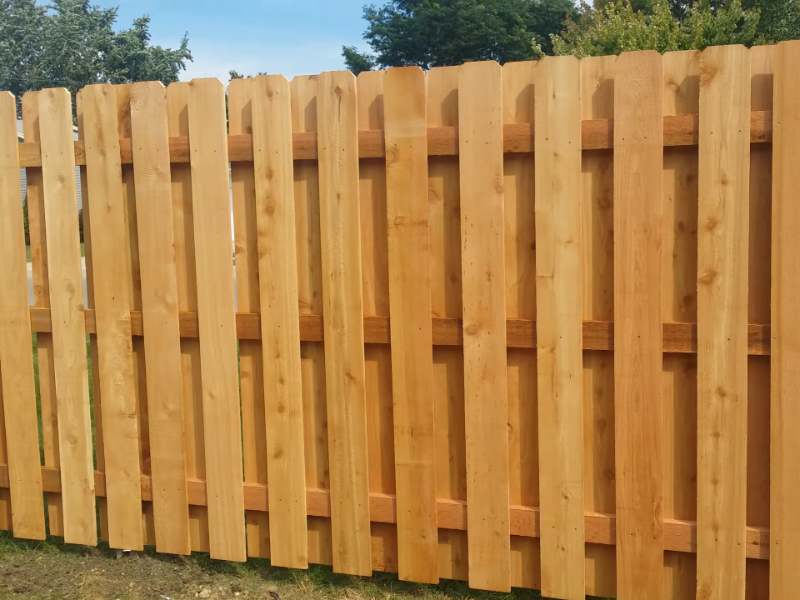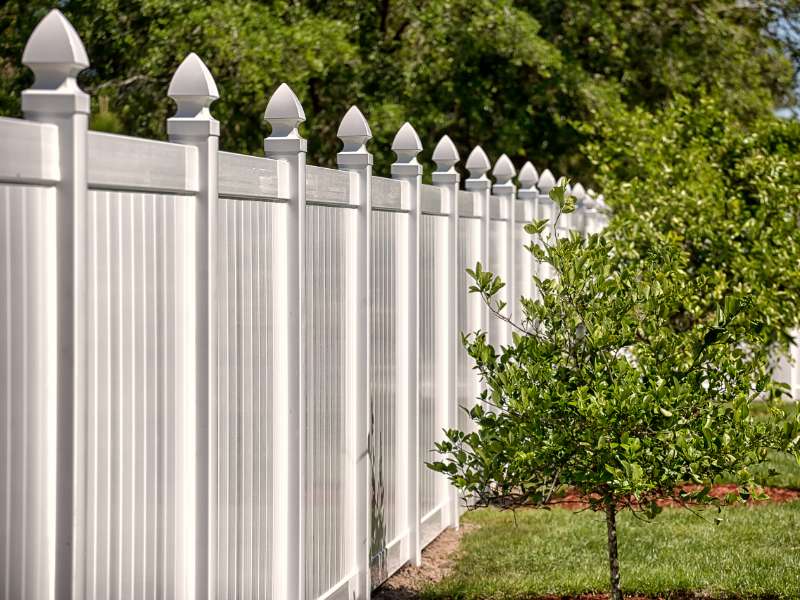A fence can improve the curb appeal of your home, provide security, add privacy, and shield you from the elements. However, it’s important to keep a few things in mind before starting a fence installation in Tampa. Here are our best tips for making plans, designing, and constructing a fence for your home.
Know What You Want and Why
Before you put up a fence, ask yourself why you want it in the first place. If its only purpose is utilitarian like keeping you dog contained, then a simple chain-link type will suffice. But if your goal is to block out noise or add some privacy, then go for something taller and more solid. It’s likely that you have multiple goals; you might want to keep pets confined while also increasing your curb appeal. Indeed, a fence can provide various benefits; still, the initial step is identifying what you’re looking for so that you may select the type of fence that best suits your needs.
Facing the Right Direction
When constructing a privacy fence, it is essential to be aware of what direction a wooden fence should face. The side of the fence that appears finished should be directed towards your neighbor’s property. On the other hand, the side with exposed posts and rails should be visible from inside your property. This is usually required by your local zoning laws or HOA rules.
However, you could choose a shadow box fence which is finished on both sides. This style give you and your neighbors the more attractive aesthetic.

Consider Fence Materials
The common white picket fence is a traditional option; however, before you purchase planks and paint it white take the time to consider the maintenance requirements. Wooden fences often demand sealant or staining from time to time, and will rot over some time. Consider choosing a material that requires minimal upkeep such as vinyl fencing, which still has the same appearance as wood, however without all the extra work. Composite fencing, aluminum, steel, wrought iron, and bamboo are also different material possibilities.

Mix Fencing Types
If cost is a concern, you can combine multiple types of fencing materials. For instance, wooden picket fencing can be placed at the front of the home, linked to chain link fencing in the back. This merge of fences not only has the potential to save on costs for installation, but can also reduce the amount of fence that would need repainting. Furthermore, not all fencing materials may be allowed in your front yard due to zoning requirements, for instance a lot of jurisdictions will not allow chain link fences in a front yard.
Do Your Research
Reach out to your HOA, as well as your municipal code enforcement concerning any restrictions relating to the look, height, and allowed materials used in constructing a fence. Local ordinances could order that the nicer side of a fence—the side that doesn’t show posts and beams—face towards public-facing property. Check what the set-back distance needs to be between your property line and the fence. Fences typically to have to be at least 2 to 8 inches apart from sidewalks and boundaries between properties. Also discover whether obtaining a permit is necessary for your fencing project.
Think Green
You can use landscaping to protect your home from the weather and view of others, and to establish property boundaries. Plant in various levels to make places that no one else can see into your house or other parts of the yard. Keep in mind that local building rules and regulations for fences in the neighborhood may specify rules for these living walls. Additionally, you’ll have to guarantee that any plants used do not overgrow these restrictions down the line.
What is the Cost of Building a Fence?
As reported by HomeAdvisor, homeowners commonly pay out between $1,727 and $4,335 for the installment of a wooden fence. For each linear foot, wood fences cost up to $45. On average, lumber is priced from $7 to $15 per foot while labor may be anywhere from $10 to $30 per foot. When computing the price of this new fence, materials such as its length, height, and type of wood should be taken into account. Furthermore, the expenses associated with gates, hardware, and a sealant must also be included in the budget.
Research the Property Line
When constructing a fence, it is essential to know where exactly to place it. To guarantee that your fence is entirely built on your own real estate and not encroaching on another private property, you should hire a surveyor to create a property survey. This report will precisely show the boundaries of the land as well as outline any right of ways. If somehow you’ve lost your property survey, you might be able to find it at the real estate records office in the county.
Hire Professionals
Installing a fence is not as easy as it looks, but the American Fence Association makes finding a local fence contractor easier. If you make a decision to have someone do it for you, request to view some of their fenced projects in the past. As the best option, select firms and people that are licensed because they usually carry bonds and insurance policies. Get up to six bids from contractors to accurately compare how each company measures up against the others.
Be a Good Neighbor
Honestly inform your neighbors of your plans to build a fence. Aim not to obstruct their views unnecessarily. Constructing a boundary fence that is shared by two or more neighbors ought to be noted in writing after the boundaries of the property have been accurately decided. Providing a friendly fence—such as a wooden privacy fence with the finished side facing the neighbor’s home—is usually thought to be courteous.
Consider Climate
In cold, northern locales where freezing temperatures occur, concrete support is necessary for fence posts. To prevent breakage when exposed to a severe cold snap, you should secure the post 36 inches in the ground. In a warmer and more damp climate such as Tampa, vinyl is preferable over wood because it isn’t as vulnerable to water damage. When confronted with extremely cold conditions, wood, bamboo, and metallic fencing are sturdiest options.
Create Entrances
To ensure both safety and usability, devise a plan for adding two pathways into a fenced off region. Make certain that one of them is wide enough to handle bulky outdoor materials such as lawnmowers and large trash bins. Accents like stepping stones, pergolas, and other decorative pieces can be used to mark the gates’ location. A typical white picket fence combined with a complementary arbor and gate offer a captivating entryway to any yard.
Dress It Up
Make certain to add a bit extra to your fencing budget in order to incorporate your taste into the fence project. When the fence is installed, you can give it unique character by adding ornamental posts or finials. Depending on the look of your house, maybe you want to paint the fence with a modern color. You can also plant a line of flowers in front of it for a friendlier look. Hang some plant hanger hooks from a wood fence and hang flower pots filled with annuals for an outward face of lively color.
In conclusion, installing a new fence is a great way to spruce up your outdoor space and make it safer for kids and pets. Before taking the plunge, however, make sure to do your research on the different types of fences out there as well as zoning laws in your area that may affect your plans. With thee few simple steps outline above, you’ll be able to get your project off the ground with peace of mind. Good luck!
